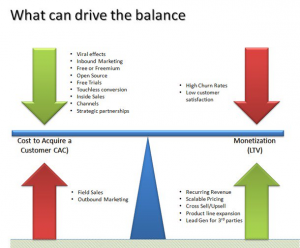In today’s incredibly noisy startup world, storytelling is the key to your business getting heard. Not just a means of getting noticed, storytelling provides a way for you to put a stake in the ground and get customers, investors and stakeholders to truly buy into your vision.
Effective storytelling establishes value and creates loyalty — two main drivers of growth — and often times determines which side of the 90%-10% failure to success rate your startup will land on. Here are six keys to effective startup storytelling:
1. Create a character
Each of us is distinguishable from the other six billion people on earth. Think of any brand (i.e. Dove) as a person – imagine what characteristics they’d have if you met them in real life. Would you want to talk with them? What would you talk about? How would you represent yourself in their presence? These are the same questions prospective customers ask when choosing a company to do business with. You’re startup’s unique characteristics should be consistently pulled through your story.
2. Have a higher purpose
A good brand has a higher purpose than the desire to sell goods or services to make a profit. That purpose is the human value of what your products and services provide. For example, if you’re a startup in the FinTech space, your purpose is not to profit from fees on investments, but to empower your customers to lead more fulfilling lives. Convey that higher purpose whenever and wherever you tell your story.
3. Be empathetic
Empathy is about standing in someone else’s shoes, feeling with their heart, seeing with their eyes. Chances are you did this when you created your product and service. And if not, you may want to go back to the drawing board. When you tell your startup story — in the media, on your website, or in marketing material — illustrate the real problems that you are solving for people.
4. Use micro-storytelling
While Fortune 500 companies can create complex storytelling campaigns across any media channel they choose, most smaller business and startups simply can’t afford to reach customers and prospects in the same way. But similar to how marketers have found ways to marry traditional marketing practices with data analysis and experimentation to find inexpensive growth hacks, things like naming can serve as an efficient and evocative form of micro-storytelling that pays dividends many times over.
Even some of the biggest startups out there use micro-storytelling in their taglines: Square (“Sell on the go.”), Venmo (“Make and share payments.”), and Evernote (“Remember everything.”)
5. Ditch the jargon
Filling your story with technical terms, acronyms and business speak is one of the best ways to lose your audience. Take a page out of Apple’s communication playbook according to Cameron Craig, who ran PR programs for the company for over ten years:
“If you ran any Apple press release through a readability level test it would most likely score a level easily understood by an average 4th grade student or lower. Any hint of jargon, cliché, or techno mumbo-jumbo would be removed in the editing process. If a “mere mortal” couldn’t understand our language, then we had failed. And failure was not an option. Steve Jobs read and personally approved every press release.”
For more essential insights and examples on brand storytelling and writing, have a look here.
6. Be visual
Although a cliché, “A picture is worth a thousand words” is as true as ever today. We are visual creatures. When people hear information, they’re likely to remember only 10% of that information three days later. However, if a relevant image is paired with that same information, they retain 65% of the information three days later. Wherever possible add visuals (video, infographics, pictures) to your story to enhance the impact and increase retention.
Next time you want to sell your business to someone, whether they’re a potential customer or an investor, remember that you aren’t selling a product or service, but rather the story behind it. If you can do that, you’ll have a much better chance of standing out from the crowd and ensuring your success.
Business & Finance Articles on Business 2 Community(53)







